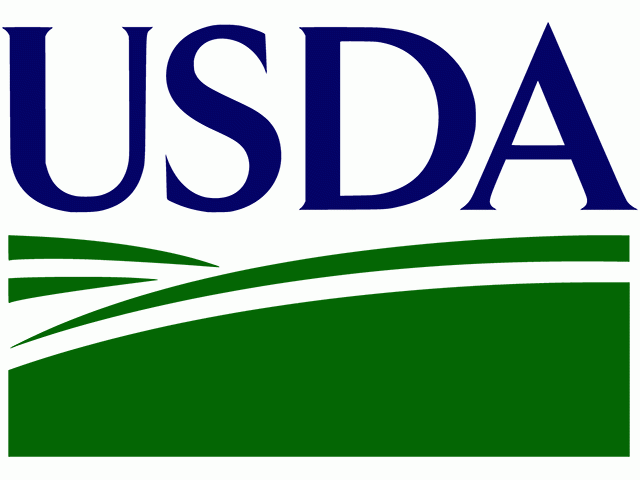USDA Reports Preview
USDA Planting Survey and Grain Stocks on Deck
Before the major league baseball season gets underway Thursday, there is one more tradition that takes place on March 31, 2021. That's when USDA is scheduled to release its Prospective Plantings report and March 1 Grain Stocks at 11 a.m. CDT.
PROSPECTIVE PLANTINGS
In the first two weeks of March, USDA sends out surveys to approximately 80,000 farmers in an effort to understand planting intentions roughly a month or more ahead of actual planting. Good intentions sometimes go astray and the unfortunate thing about this report is the market's confidence in March planting estimates is often misplaced.
Last year's corn planting estimate was 6.2 million acres higher than the final tally. According to USDA, the largest soybean miss in the last 20 years was 8.5 million acres. In spite of the inconsistent track record, the market has a history of responding to USDA's planting survey.
The unique thing about 2021 is with spot corn prices trading near their highest level in over seven years and spot soybean prices near their highest in over six years, there is plenty of incentive to plant both crops. The new-crop soybean/corn ratio at 2.61 theoretically favors more soybeans, but traditional commitments to ethanol and cattle favor corn.
P[L1] D[0x0] M[300x250] OOP[F] ADUNIT[] T[]
Last year's three-crop total of 218.2 million acres, plus roughly 9 million prevented planting acres, makes 227 million acres available, provided the prevented acres return to service. According to Dow Jones, analysts expect 93.1 million acres of corn plantings and 90.0 million acres of soybeans -- a reasonable early guess. One possible surprise is that more acres could find their way into this year's planting mix than we currently suspect.
As far as ramifications for new-crop prices, 93.0 million corn acres only adds roughly 200 million bushels of corn to ending corn stocks in the new season. Even if the corn total comes in at 94.0 million acres or higher, any selling in December corn will likely be limited this early in the season.
Dow Jones' survey estimate of 90.0 million acres for soybeans is bullish for soybean prices, as it does nothing to add ending stocks to the expected new-crop total and leaves no margin for adverse weather. Just because the market needs more soybean acres doesn't mean more will be provided, and it is difficult for soybeans to compete with farmers' preferences for corn.
On a side note, the National Cotton Council's February survey expects 11.5 million acres of cotton to be planted in 2021, down from 12.1 million acres a year ago. With sorghum prices currently near eight-year highs, it wouldn't be surprising to see U.S. sorghum acres offer cotton some competition and add to last year's 5.9-million-acre total.
MARCH 1 GRAIN STOCKS
For the past several reports, U.S. corn stocks have tended to be less than expected and corn's unusually strong basis would support that possibility happening again this time. Dow Jones' survey is expecting 7.778 billion bushels (bb) of March 1 corn stocks, a six-year low if the survey is correct.
Simple analysis has a hard time estimating corn stocks as low as Dow Jones' survey does, as there were only 1.093 bb of corn shipped in the first half of the season. However, it is possible end users bought corn earlier than usual, not wanting to compete with China's rising demand. The survey's range of guesses is from 7.573 bb to 7.980 bb, but there is enough uncertainty in corn to see a number land outside the estimated range.
Dow Jones' survey expects 1.561 bb of March 1 soybean stocks, the lowest in five years, if correct. The spread of guesses is wide and hints at a nervous uncertainty, ranging from 1.455 bb to 1.825 bb. Export shipments got off to a fast start in 2020-21 and continue to trickle in, even as export business has shifted to Brazil. I suspect Dow Jones' estimate will be close, but a surprise is always possible.
For wheat, Dow Jones' survey estimates 1.272 bb of March 1 stocks, the lowest in six years, if true. The funny thing is that even though wheat supplies are down, the demand total for three-quarters of wheat use hasn't changed much the past six years. Wheat supplies probably have the smallest surprise potential in Wednesday's report, but we never know until we see what USDA says.
Join DTN's webinar at noon CDT, Wednesday, March 31. I'll explain how the reports went and what USDA's numbers will mean for corn, soybean and wheat prices. Feel free to bring questions. Register now at: https://ag.dtn.com/…
| QUARTERLY STOCKS (million bushels) | ||||||
| 3/1/21 | Avg | High | Low | 12/1/20 | 3/1/20 | |
| Corn | 7,778 | 7,980 | 7,573 | 11,322 | 7,952 | |
| Soybeans | 1,561 | 1,825 | 1,455 | 2,933 | 2,255 | |
| Wheat | 1,272 | 1,405 | 1,227 | 1,674 | 1,415 | |
| PROSPECTIVE PLANTINGS | ||||||
| ACREAGE (million acres) | USDA | USDA | ||||
| 3/31/21 | Avg | High | Low | 2019/20 | 3/31/20 | |
| Corn | 93.1 | 94.5 | 92.0 | 90.8 | 97.0 | |
| Soybeans | 90.0 | 91.3 | 88.9 | 83.1 | 83.5 | |
| Cotton | 11.5 | 12.1 | 13.7 | |||
| All Wheat | 45.2 | 46.4 | 44.4 | 44.3 | 44.7 | |
| Winter | 31.8 | 32.2 | 30.4 | 30.4 | 30.8 | |
| Spring | 11.8 | 12.9 | 11.0 | 12.3 | 12.6 | |
| Durum | 1.6 | 1.8 | 1.3 | 1.7 | 1.3 | |
Todd Hultman can be reached at todd.hultman@dtn.com
Follow Todd Hultman on Twitter @ToddHultman1
(c) Copyright 2021 DTN, LLC. All rights reserved.




